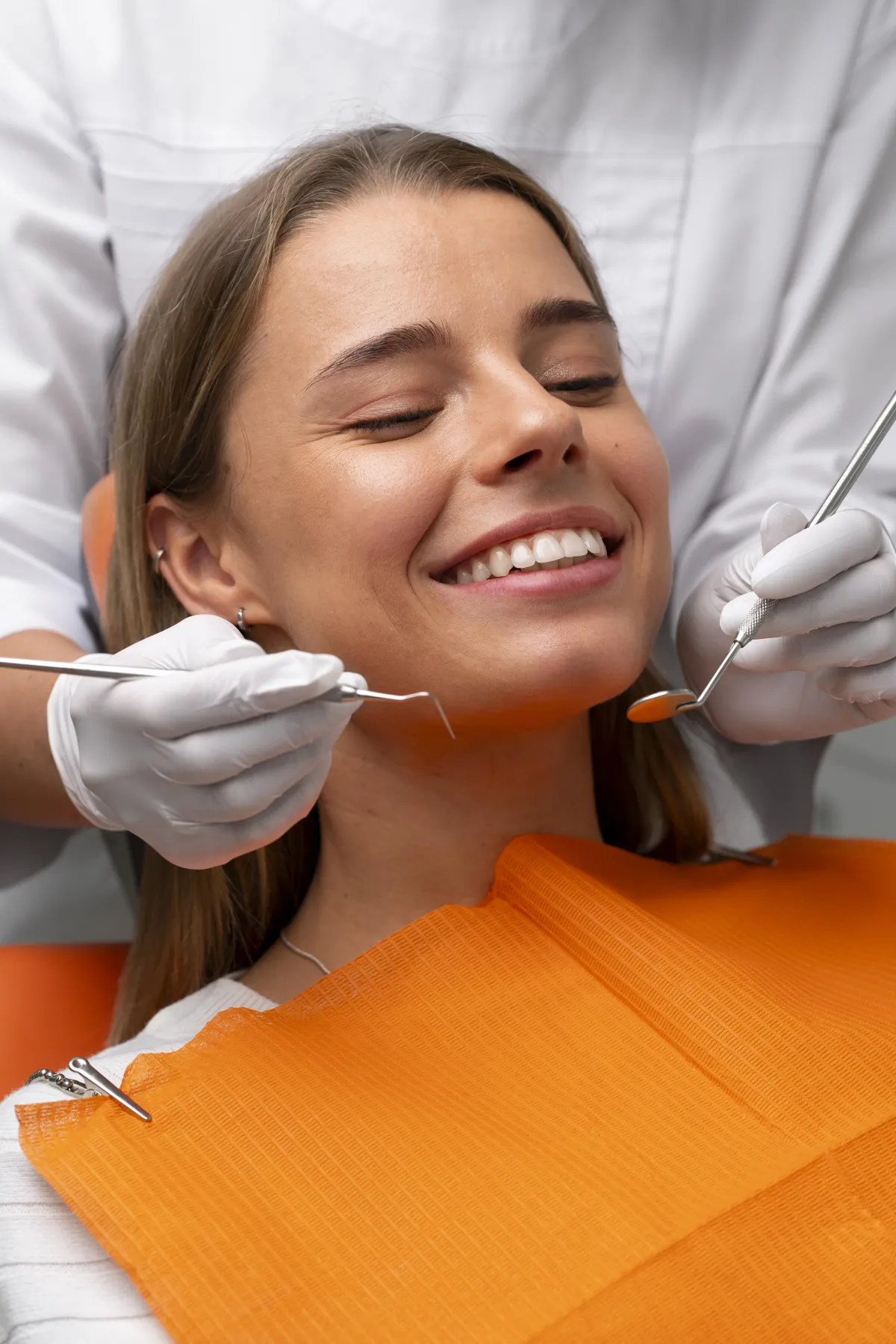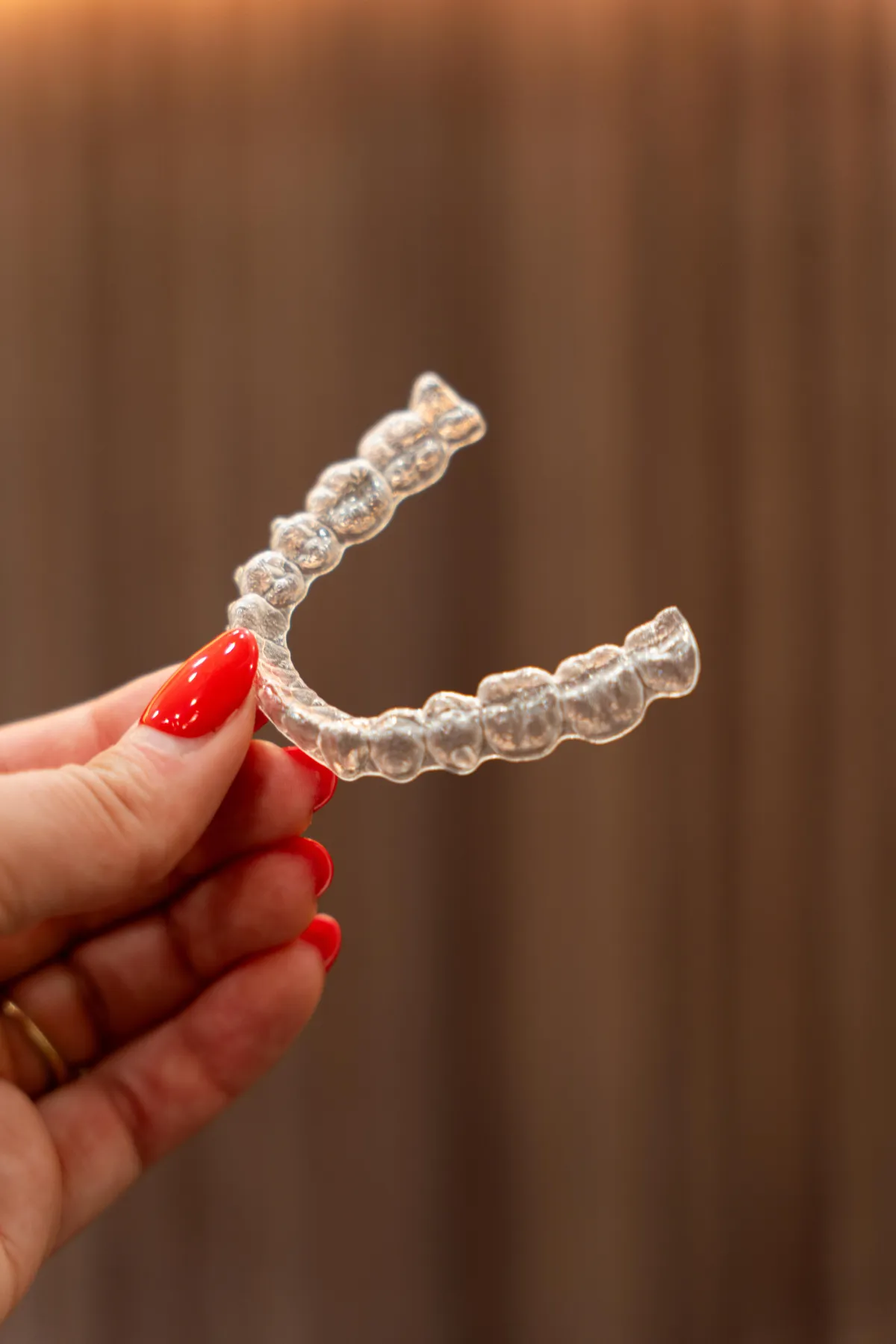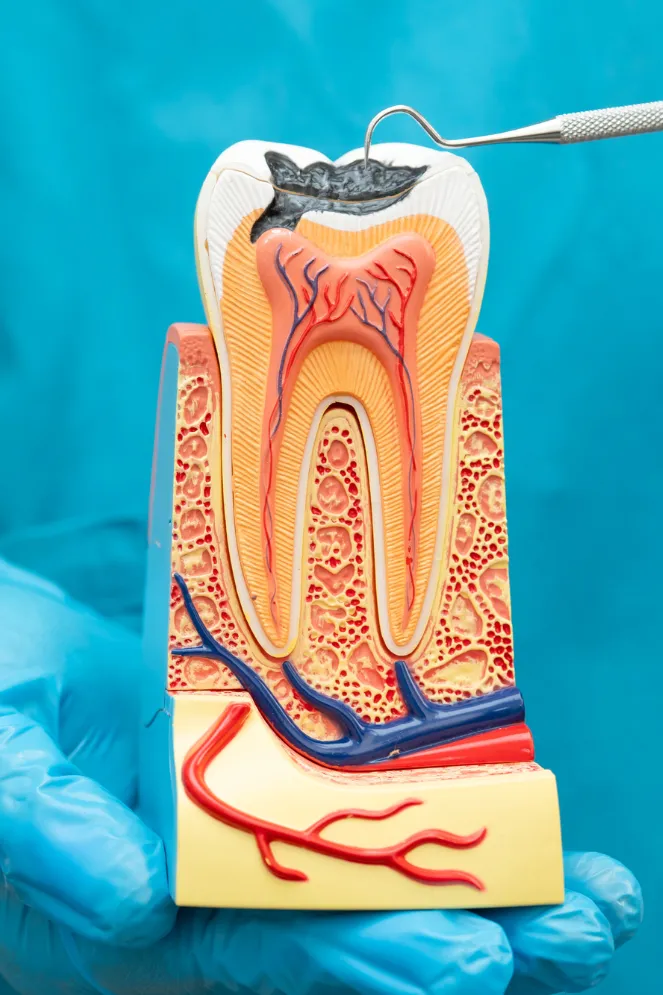Aftercare Instruction
Aftercare
Instruction

Keeping Smiles Clean with Invisalign
Good oral hygiene is essential for a healthy, confident smile — especially during orthodontic treatment. At Feasterville Family Dentistry of Staten Island, we often recommend Invisalign for teens because it makes maintaining clean teeth much easier than traditional braces.
With braces, brushing and flossing take extra time and care to clean around brackets and wires, increasing the risk of plaque buildup. Invisalign aligners, on the other hand, can be easily removed for normal brushing and flossing routines. We may suggest a special cleaning solution, but otherwise, the process is simple — just brush the aligners gently with warm water and a soft toothbrush before putting them back in place.


Post Treatment
Care
It's normal for some to experience minor tooth sensitivity for up to three days after their treatment. If you experience any severe or prolonged sensitivity, please contact our office. All whitening procedures eventually wear off, and teeth gradually return to a darker shade. So, you may want to touch up your teeth occasionally. We can help you determine what maintenance program you should follow, if any. Of course, one of the best ways to preserve your new, brighter smile is to keep up with regularly scheduled professional cleanings!
For the first 48 hours, you should avoid excessively hot or cold foods or beverages and anything that would stain a white t-shirt, as your teeth will be especially vulnerable to staining. This includes: Red Meat, Soy Sauce, Coffee or Tea, Fruits (they're naturally acidic, and darker fruits, like berries, stain), Tomatoes (including sauce and juice), Dark vegetables (e.g., beets, spinach), Colas, Foods containing dyes or artificial coloring, Bananas, Milk, Yogurt, Fish, Chicken, White bread, Light vegetables (e.g., cauliflower), White Wine.
Composite (White) Fillings
Your new fillings will be fully hardened before you even leave the office; however, you may experience numbness in your lips, teeth, and tongue for several hours due to the anesthetic. As part of your dental aftercare treatment, try to avoid chewing until the numbness has completely worn off, or chew on the opposite side of the newly placed filling(s), as it's easy to bite (or burn) your tongue or lip accidentally. You may also experience sensitivity to pressure and/or hot and cold food or beverage-this may linger for a few weeks but will fade over time. If you feel soreness, tenderness, or discomfort at the anesthetic injection sites, you may take an over-the-counter pain reliever like aspirin or ibuprofen (e.g., Advil, Tylenol)*.
It's very common to have an incorrect bite following a filling placement when using an anesthetic, as the numbness may prevent you from feeling whether or not your bite is even. If your bite feels uneven after the numbness subsides, please call our office, and we'll get you in as soon as possible to correct it.
Please call if you have any questions or concerns!
*Do not take these medications if you have a medical condition that prevents you from doing so or are allergic.


Root Canal
Your Root Canal may take two or more appointments to complete.
When an anesthetic is used, your lips, teeth, and tongue may be numb for several hours after each appointment. Try to avoid chewing until the numbness has completely worn off or chew on the opposite side of your restored tooth as it's easy to bite (or burn) your tongue or lip accidentally
We'll place a temporary filling or crown on the treated tooth to protect it until the final restoration has been placed. Between appointments, it is common for a small portion of your temporary filling or crown to wear away or break off, which is perfectly fine. However, if the entire filling or temporary crown comes off, please call our office immediately so we can protect your tooth.
To help keep your temporary filling or crown in place, try to avoid:
+Sticky foods (especially gum or caramel)
+Biting hard foods/substances (e.g., ice, fingernails, and pencils)
Though you may not have experienced discomfort before treatment, it's normal to experience it after restoration. This includes soreness when chewing, experiencing a dull ache near the restoration site, and mild irritation and/or gum tenderness-all of which typically subside within 7-10 days. To control discomfort, take pain medication as recommended by your dentist. If antibiotics are prescribed, continue to take them for the indicated length of time, even if all symptoms and signs of infection are gone.
Tooth Extractions
We often use an anesthetic during tooth extractions, so your lips, teeth, and tongue may be numb for several hours following surgery. We recommend a liquid diet for the first 24 hours to prevent food from coming into contact with the extraction site and to remain hydrated during healing. Just be sure not to use a straw!
To help decrease inflammation, place cold towels or an ice bag on your face for the first 6-8 hours after treatment for 15 minutes at a time. Repeat this process if you continue to experience swelling or stiffness over the next few days. Do not touch the extraction site with your fingers or tongue, and wait until the morning following surgery to rinse your mouth; this will help you prevent infection and keep from dislodging the blood clot necessary for proper healing.
The morning after surgery, rinse with warm salt water (use 1/2 teaspoon salt) and repeat several times daily to promote faster healing. Your saliva may be slightly tinged with blood for a few days, but if bleeding persists, place moist gauze over the extraction site and bite down for 30-45 minutes.
Take pain medication as recommended by your dentist to control discomfort. If antibiotics are prescribed, continue to take them for the indicated length of time, even if all symptoms and signs of infection are gone.
Please call us (215) 357-4321 if you experience persistent pain or bleeding or have any questions or concerns.

Frequently Asked Questions
How do I clean my Invisalign aligners?
Rinse your aligners with warm water and brush them with a soft toothbrush before reinserting. Maintain regular oral hygiene for best results.
What foods should I avoid after teeth whitening?
Avoid hot, cold, and stain-causing foods and drinks for 48 hours, such as coffee, tea, berries, tomato-based foods, and red meat.
How should I care for new composite (white) fillings?
Avoid chewing on the treated side until numbness wears off. Some sensitivity to hot, cold, or pressure is normal and fades over a few weeks.
What should I do after a root canal procedure?
Avoid chewing on the treated tooth until numbness subsides. Keep temporary fillings or crowns intact and contact the office if they come off completely.
What aftercare is needed following a tooth extraction?
Follow a liquid diet for 24 hours, avoid using straws, apply ice for 6–8 hours, rinse with warm salt water the next day, and take medications as prescribed.

Ready to book your appointment?
Schedule your appointment today and experience the Feasterville difference. We provide convenient insurance and financing options, ensuring a stress-free dental experience.
Ready to book your appointment?
Schedule your appointment today and experience the Feasterville Family Dentistry difference. We provide convenient insurance and financing options, ensuring a stress-free dental experience.
Services
About Us
Insurance and Financing
Contact Us

© Copyright Feasterville Family Dentistry 2025. All Rights Reserved.


